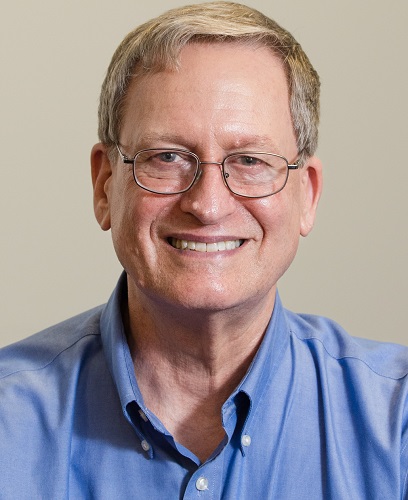Featured Stories
-
Elevating Pouch Manufacturing with Pearl Technologies' Cutting-Edge Solutions
For manufacturers seeking efficiency, precision, and safety in pouch production, Pearl delivers unmatched innovation across three standout... -
Faster Product Composition Analysis Equals Better Quality Assurance
Near Instant Testing and Reduced Costs to be Found -
Methods to Precisely Measure Tension and Web Control
How to Control Automatically Within Set Parameters
News | New Products
-
PACKZ 11 Launches with Industry-First RIP Integration
Plus extended CF2 format and automated support for 2-D Barcodes as Required by the Sunrise 2027 Initiative
-
Double E Group Acquires CAC, Further Enhancing its Strength in the Global Converting Industry
Double E Group, a global leader in converting components and web handling technology, has announced its acquisition of Converter Accessory Corporation (CAC)
-
Nobelus Launches Entry-Level Komfi® Thermal Laminator
FINISHING SOLUTIONS SUPPLIER OFFERS NEW JUNIOR 52 LAMINATING SYSTEM
-
Double E Group Mourns the Loss of Founder and Converting Industry Pioneer, Richard Edward Flagg
Double E Group announces with profound sadness the passing of its founder, Richard Edward “Ed” Flagg, on June 23, 2025. He was 85.
-
Convertech Brand to Fully Transition to Double E Group Same Team, Same Excellence, Unified Name
Double E Group has announced that Convertech, one of its subsidiaries and a trusted provider of core chucks and shaft solutions for the converting industry, will now operate solely under the Double E Group brand.
-
Pulse is Making Print Simple at Labelexpo Europe 2025
Narrow web ink specialist Pulse is Making Print Simple at Labelexpo Europe 2025, as it challenges flexo printers to rethink how they work and shows solutions that turn production bottlenecks into revenue generators.
-
ROTOCON to debut at Labelexpo Europe with three machine demonstrations
ROTOCON will make its Labelexpo Europe debut, exhibiting together with HS Machinery on stand 4D21.
Expert Advice
Web Line Knowledge Offers a Competitive Advantage
- Published: February 01, 2002, By Timothy J. Walker, TJ Walker & Assoc. Inc.
Web lines are the backbone of the converting industry — the equipment used in converting paper, film, foil, and other webs into valued product. In this monthly column, I will try to help converters understand how web lines work, how they can be improved, and mainly, how this knowledge can increase profits.
The primary motive for increased web line knowledge is defect prevention. The four main defect areas are abrasion, wrinkling, deformation, and breakage. Each can take a bite out of yields; in combination, they can be catastrophic.
To prevent these defects, we must understand how webs and web line equipment work, and how the two interact. Web line knowledge starts with web handling: how to unwind, transport, and rewind web materials. We must be able to handle the web before we can process it. Topics include:
Web Properties: Tailor web processes to web material. We must consider the web's mechanical behavior and limits, surface characteristics, and interaction with the environment.
Roller Design: The primary “hand” on the web is the simple rotating cylinder. Rollers should be designed based on web surface, tension, and speed.
Nips: This includes the advantages, applications, and pitfalls associated with creating high pressure on a web sandwiched between two rollers.
Traction: The “grip” of web handling cannot be assumed. An unintentional sliding web can be as catastrophic as a sliding automobile.
Tension Control: The tension control system determines length, registration, width, and speed. More importantly, web tension magnitude and variation are at the root of all four major web defect areas.
Lateral Position Control: Web tracking relative to machine centerline may involve the “normal entry rule,” variable diameter rollers, or sophisticated closed loop control.
Winding and Unwinding: Many operator hours are spent tending winders. Winders must be designed based on material properties, roll geometry, cores, roll splicing, and operator interaction.
Floatation: Though not required by all web lines, it is used to turn a web without touching one or both sides. While infrequently applied due to cost, noise, and instability, floatation should be included in your web line design bag of tricks.
Web line knowledge is of most value when you apply it to more complex web-dependent systems:
Controls: Web spring constants and wound-roll inertial variations make web control unique. Lateral control is limited by the web's mechanical limitations.
Safety: Process engineers provide input into personnel safety. Government agencies and industry associations provide guidelines, but line experience will make safety measures effective and convenient.
Auxiliary Equipment: Systems intimately integrated into the web line commonly are the domain of the web line engineer. These systems include web cleanliness, slitting, sheeting, stacking, and folding.
Process Interaction: This is what it's all about. Web lines are built to process the web. Coating is not just fluid handling, drying is not just air handling, and laminating is not simply normal pressure. All web value-adding processes rely on a well-behaved web.
Process Integration: This is one of the advantages of web lines and continuous processing. Winding and unwinding always involve some waste. Integrating process steps into a single web line reduces costs, increases yield, and improves productivity.
That last part sounds like improved profits. And you thought this was just about the technical stuff!
This month's column provides a framework for future web line discussions. I would appreciate your input on where you would like this column to go and how it can be valuable to you. Please write or call me with your ideas for topics to discuss or debate.
Timothy J. Walker has 20+ years of experience in web handling processes. He specializes in web handling education, process development, and production problem solving. Contact him at 314/323-6256; tjwalker@tjwa.com.




















